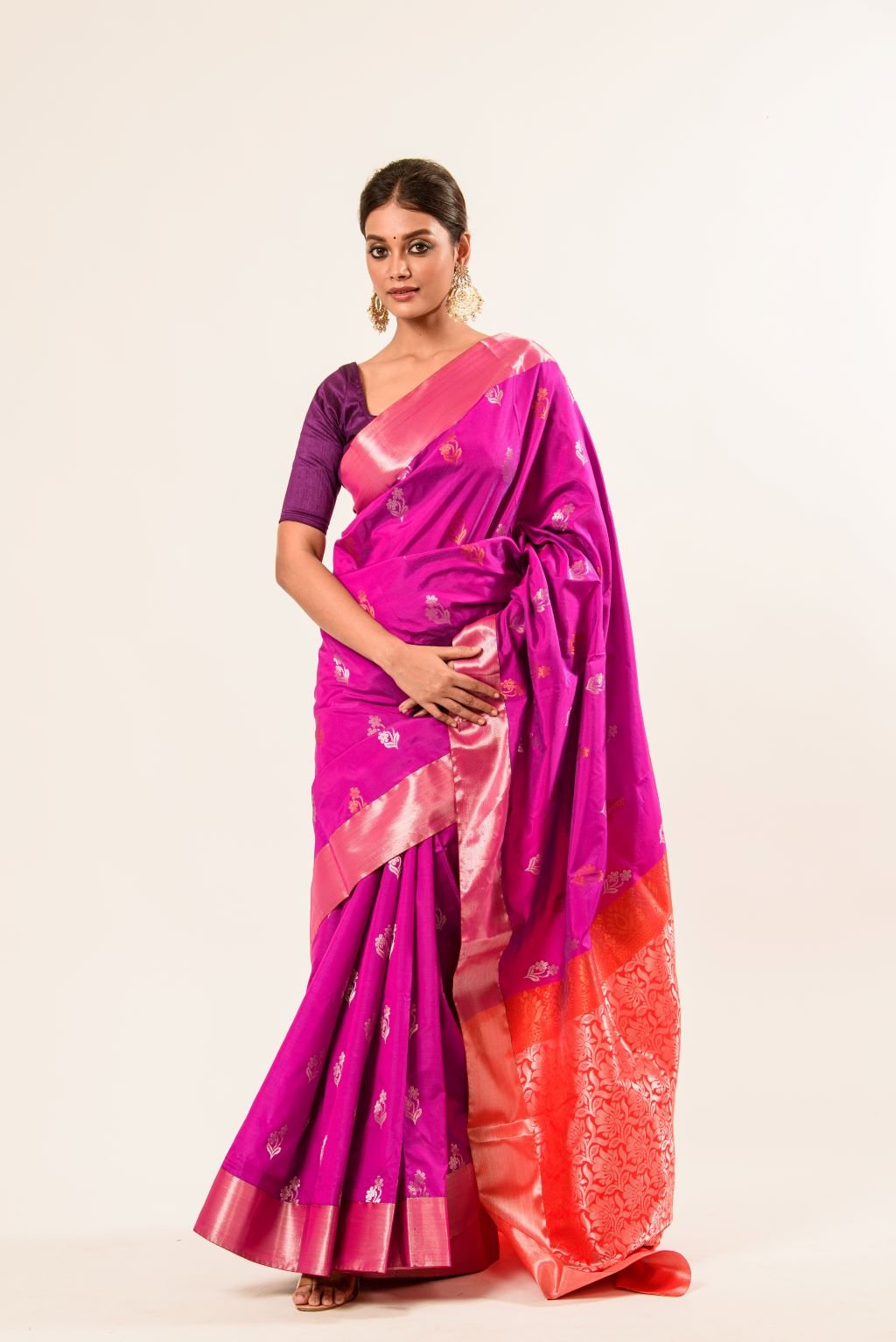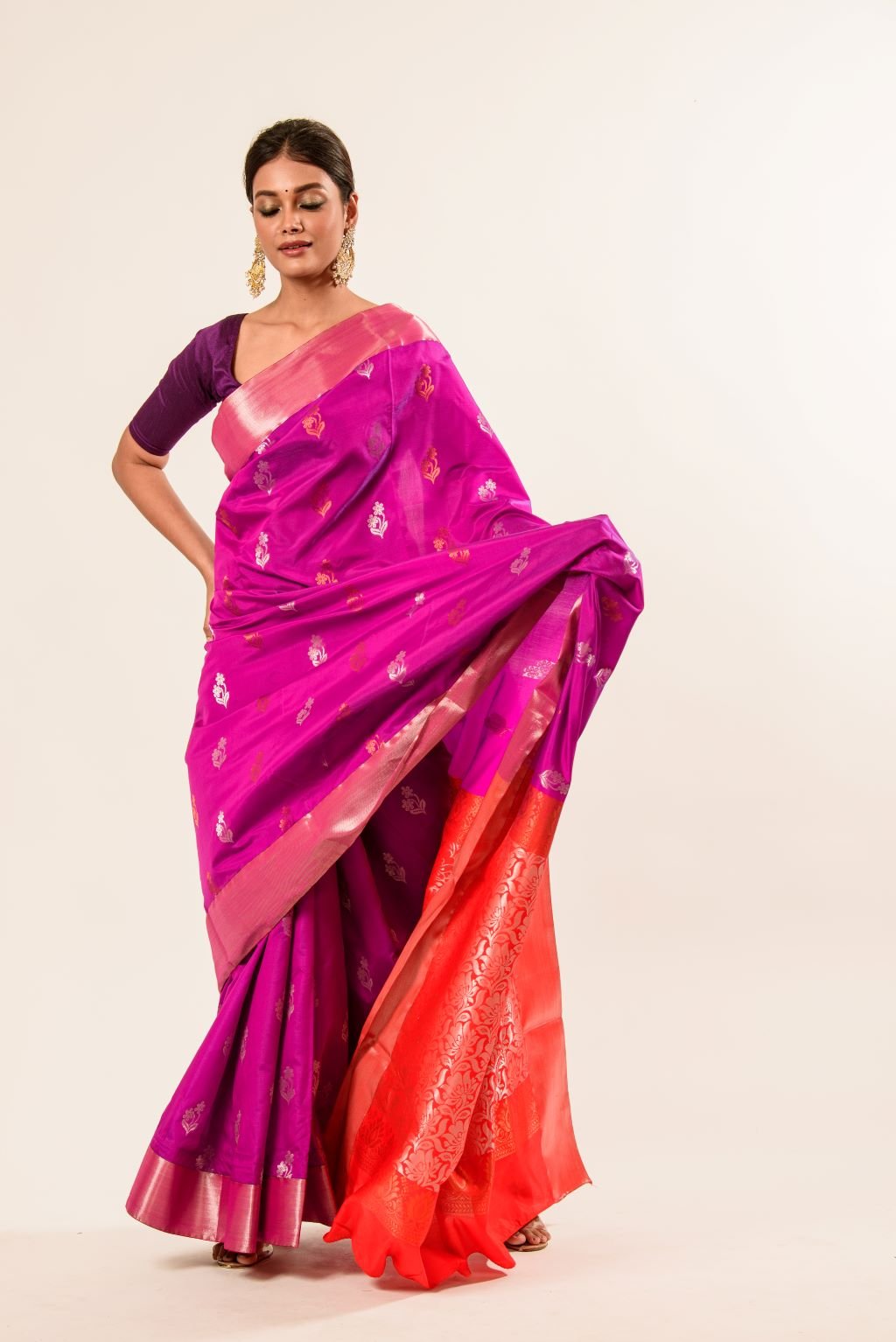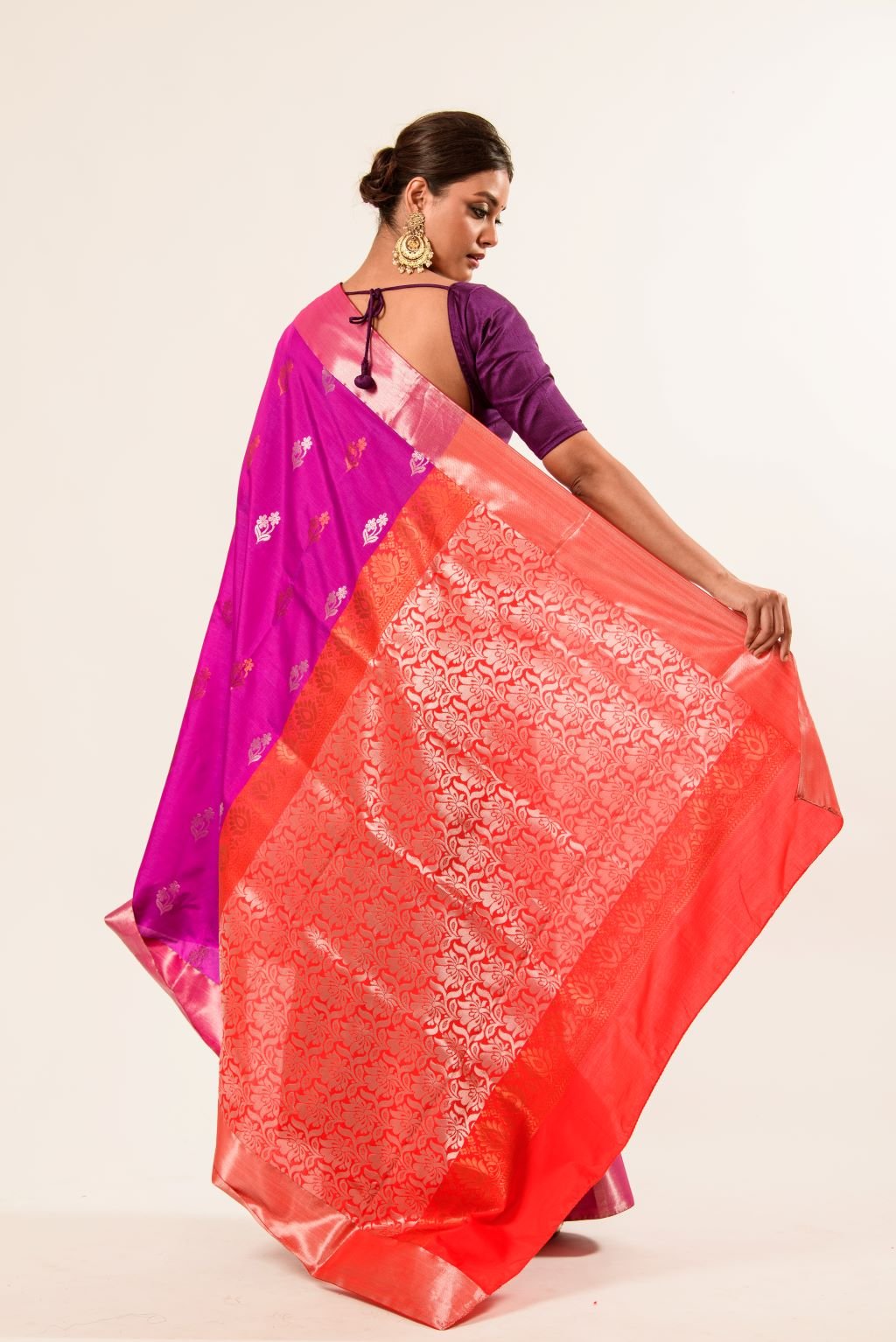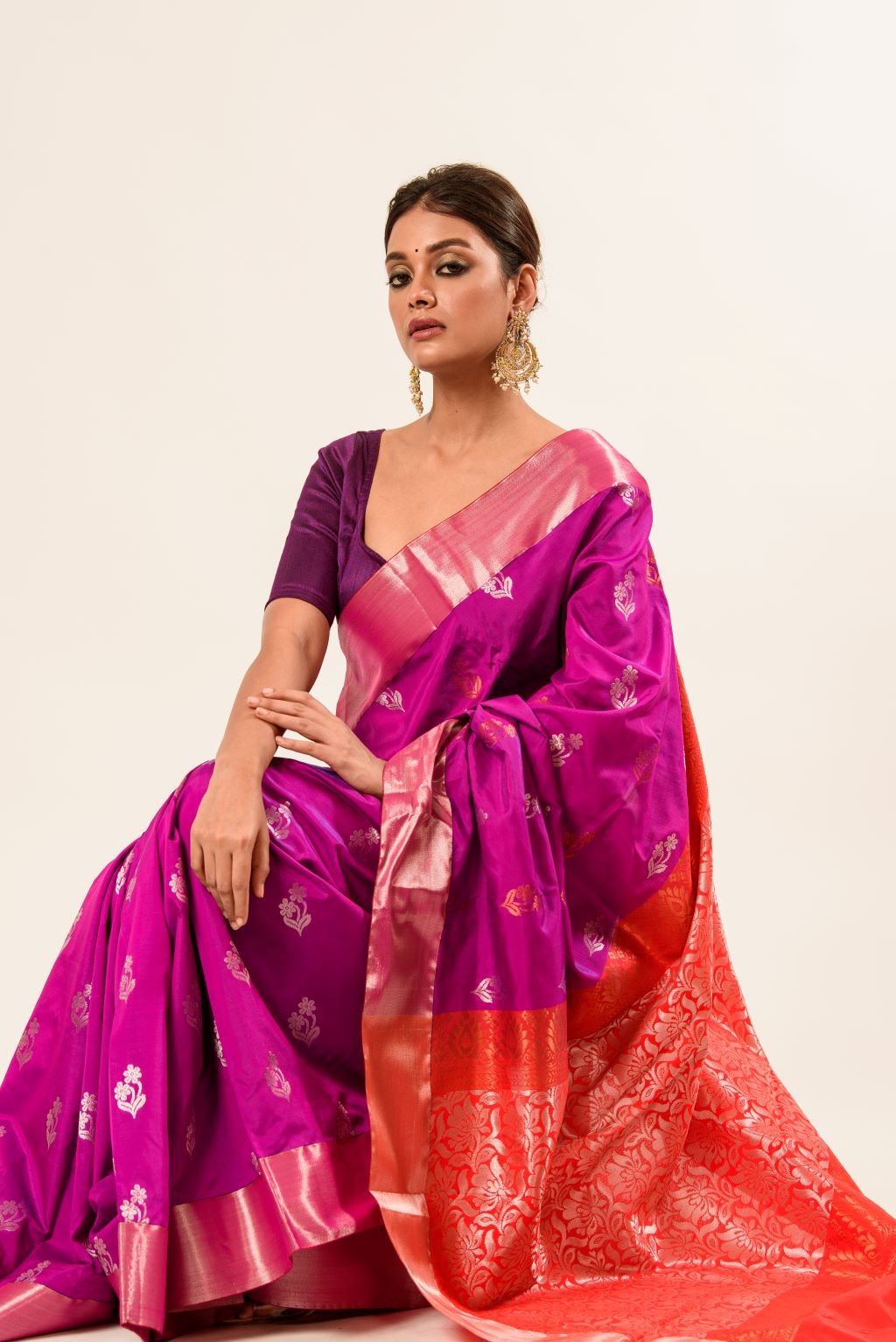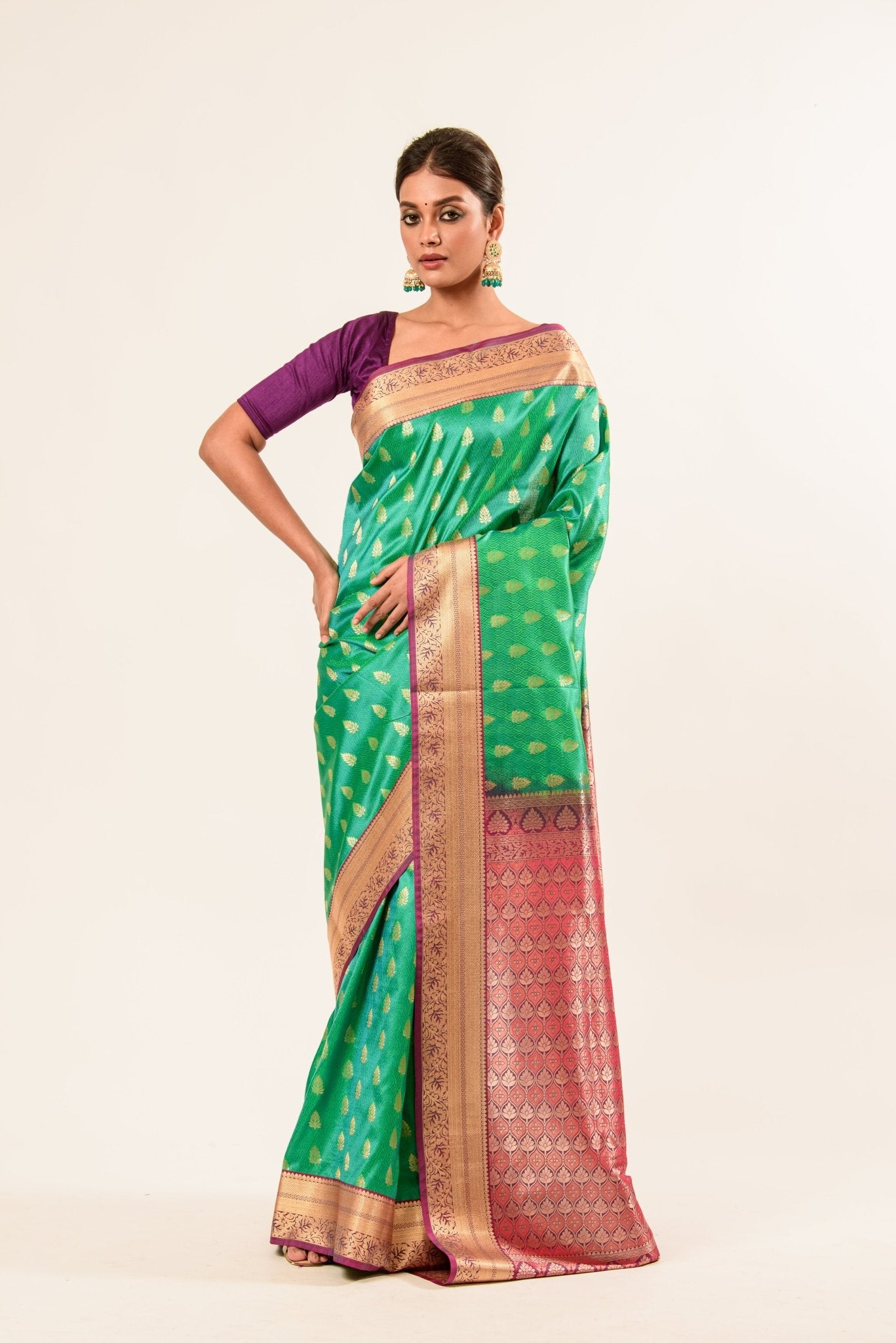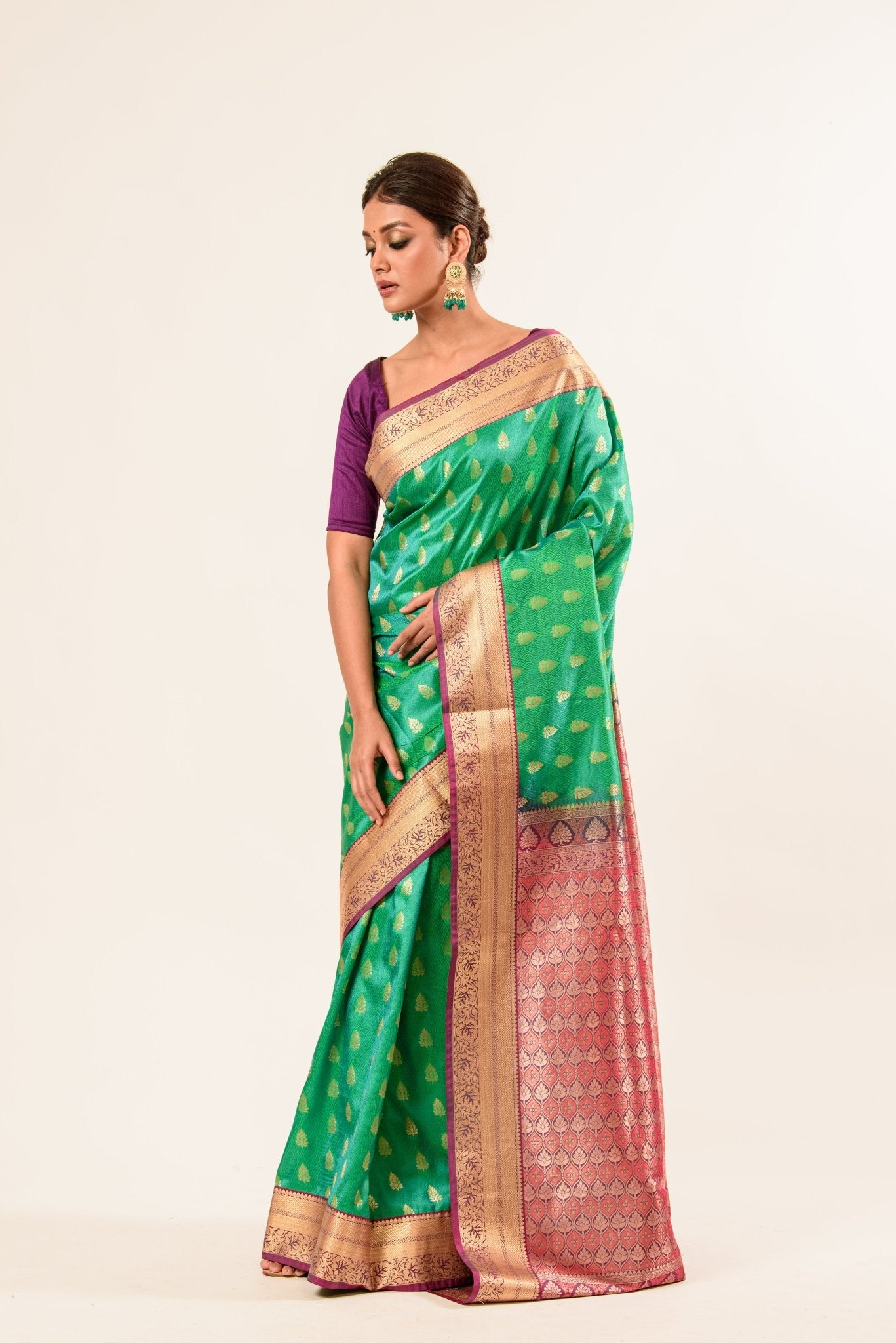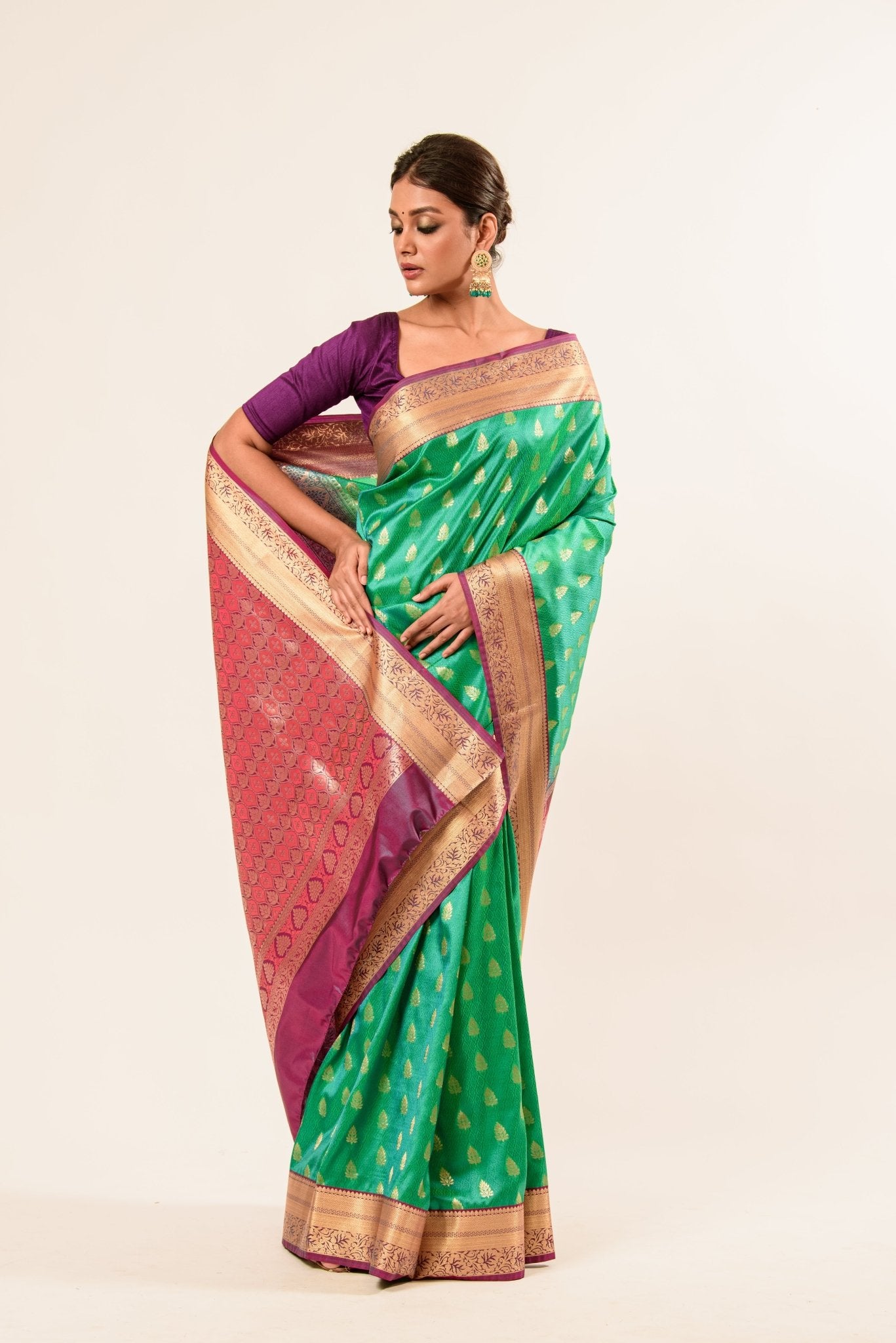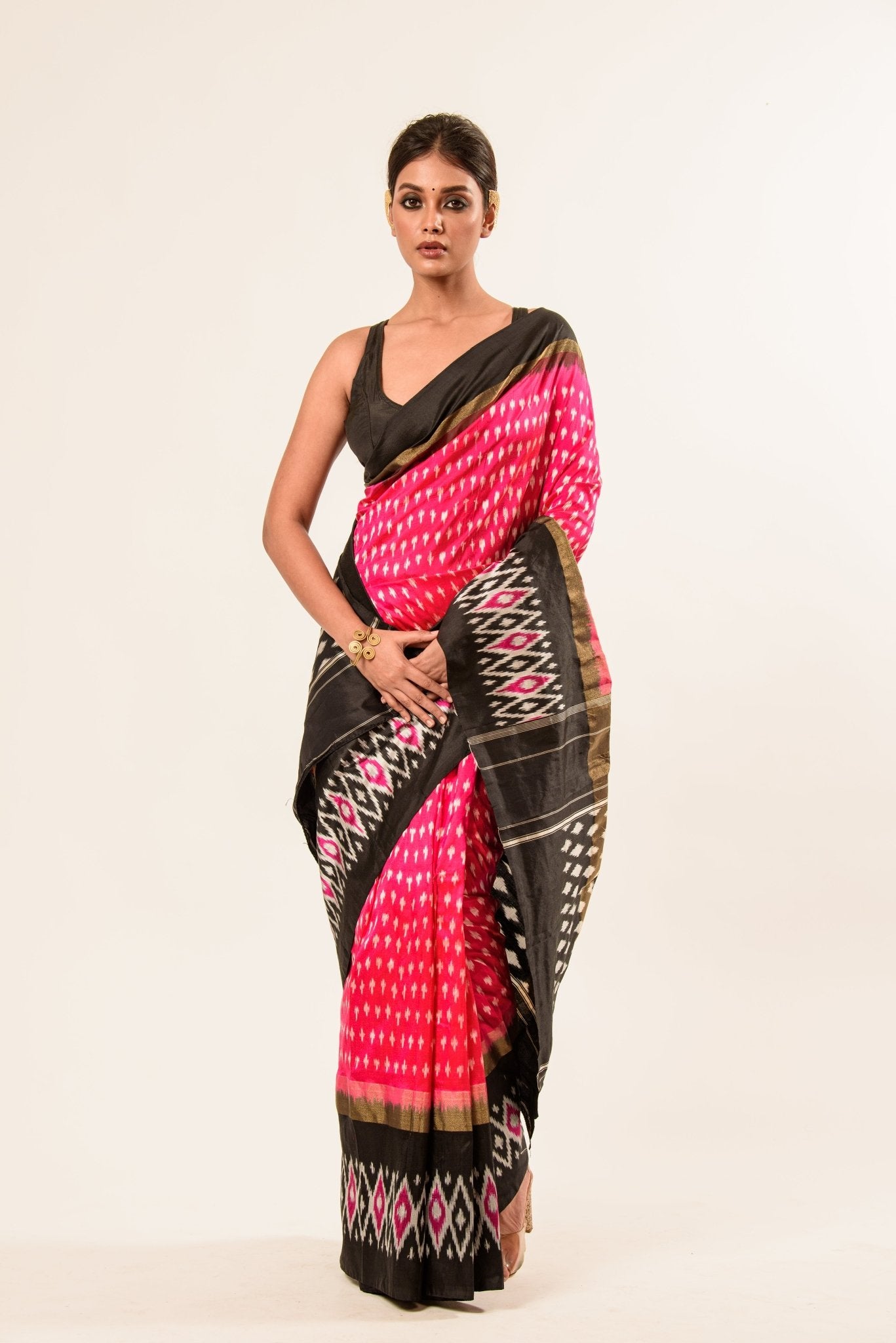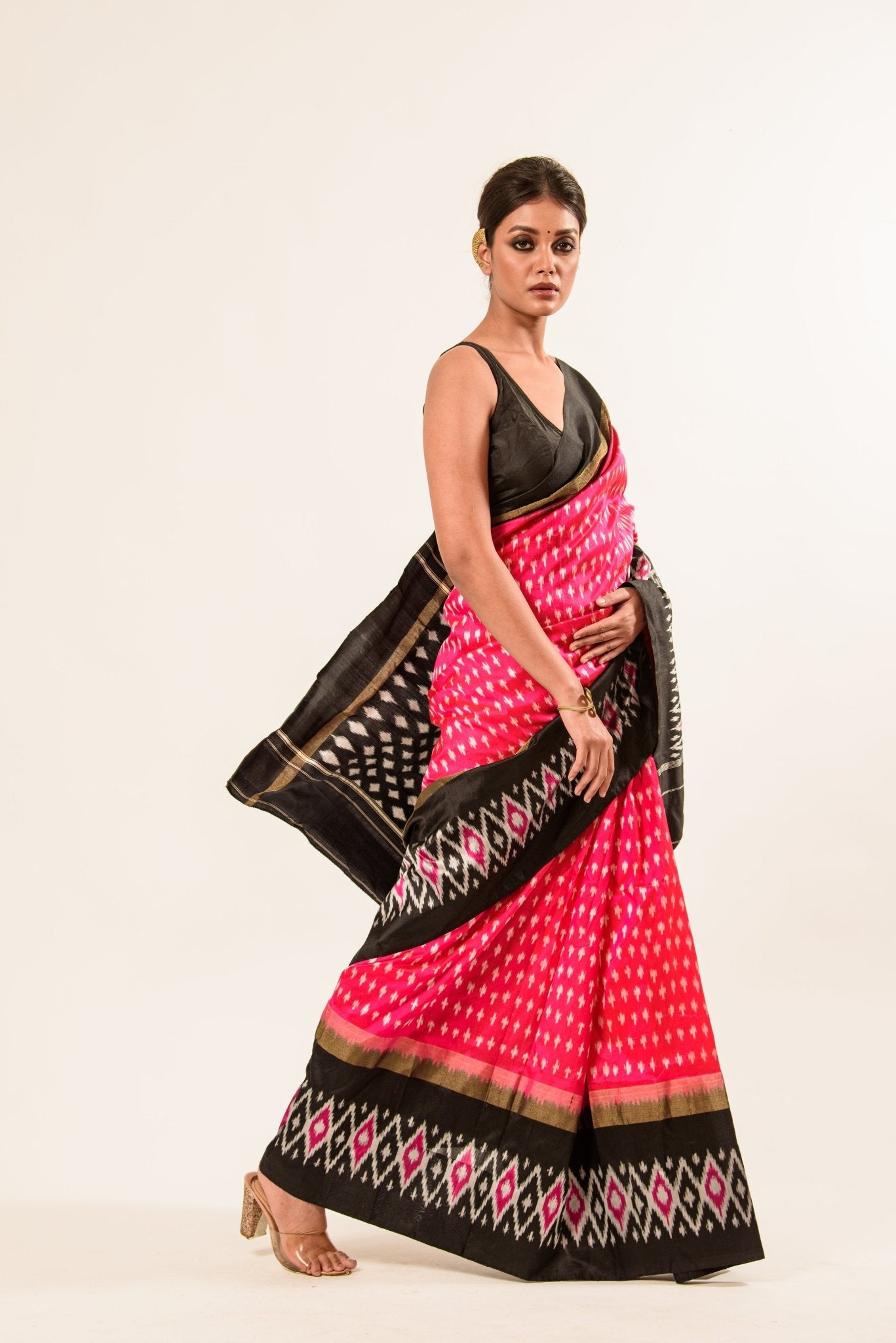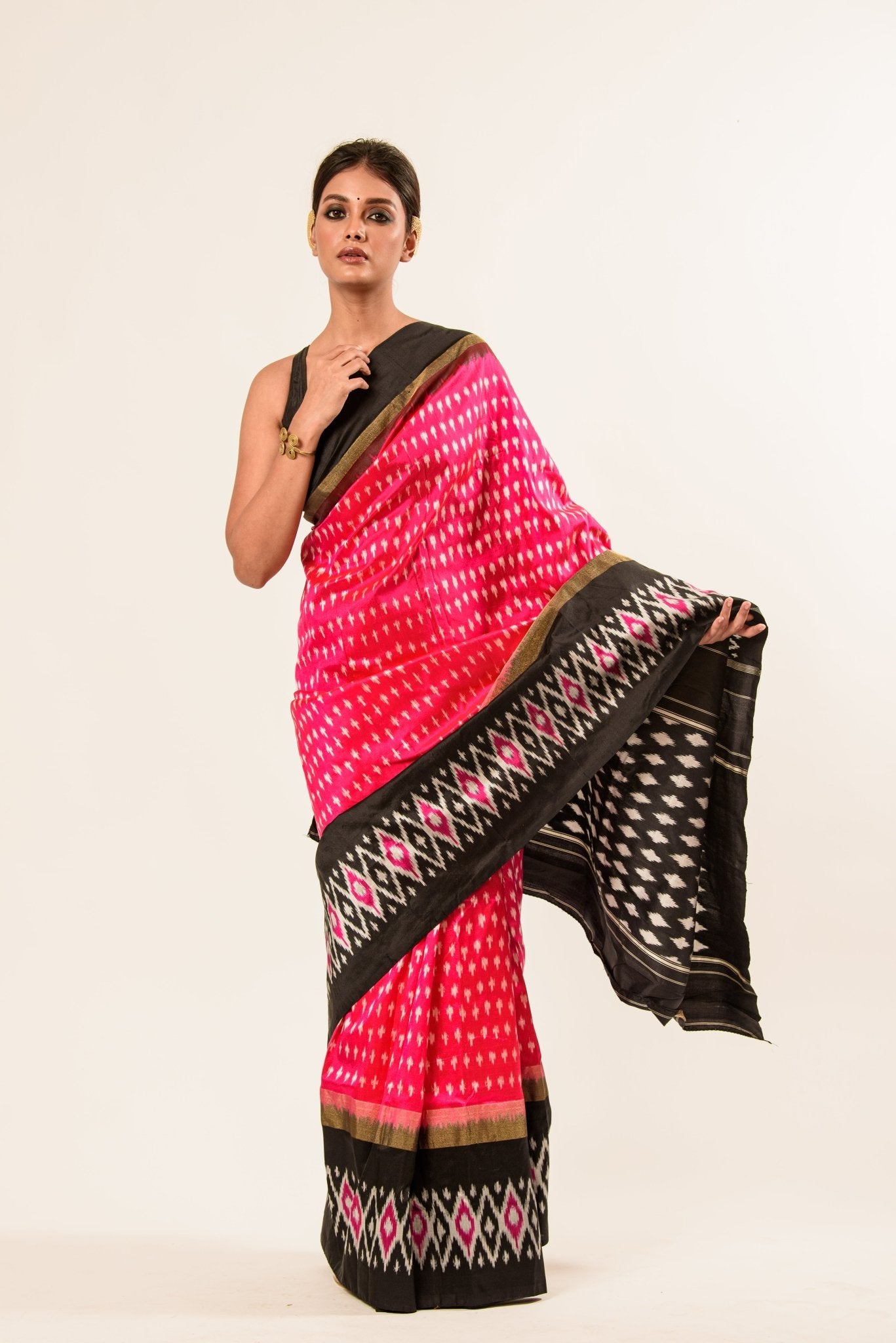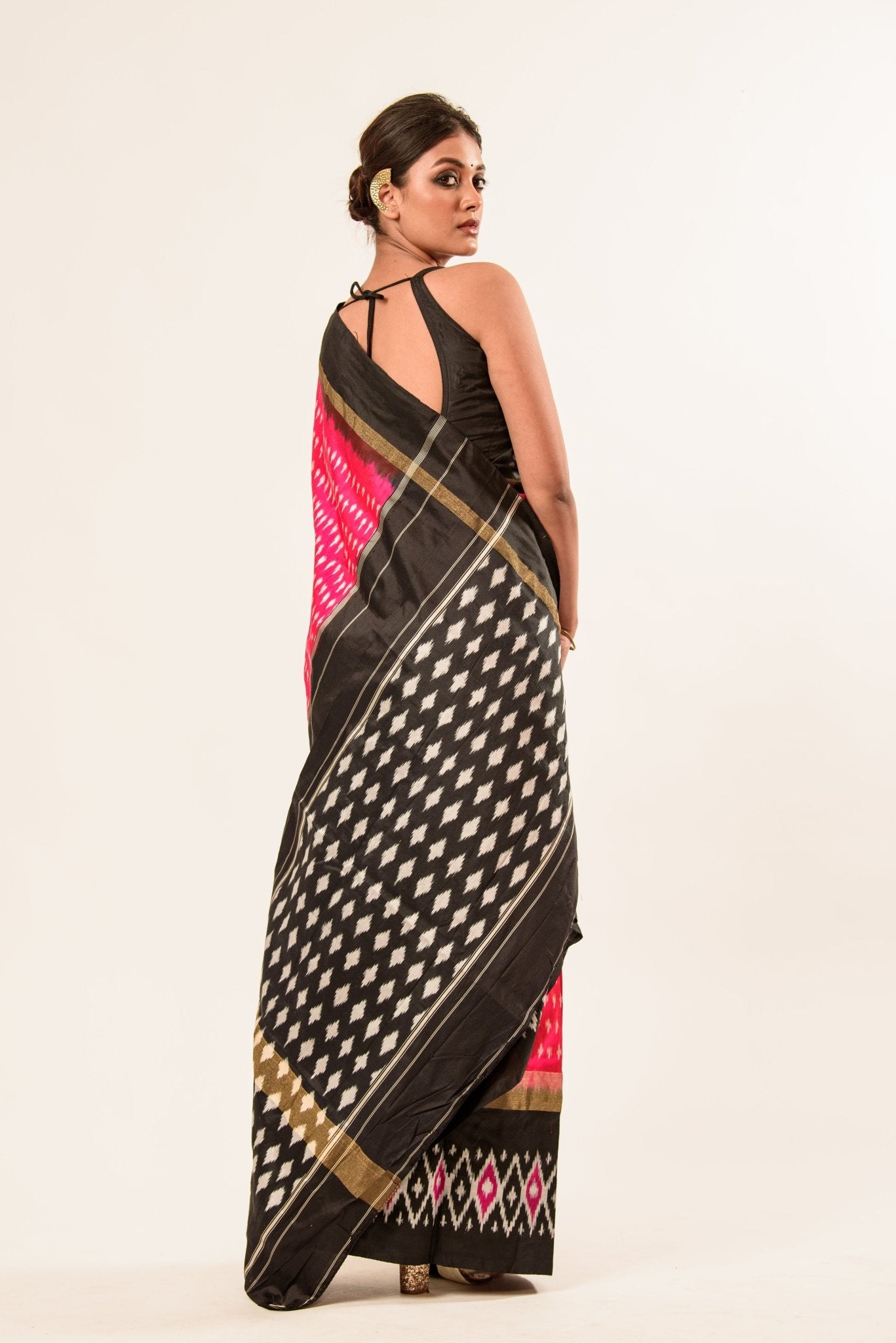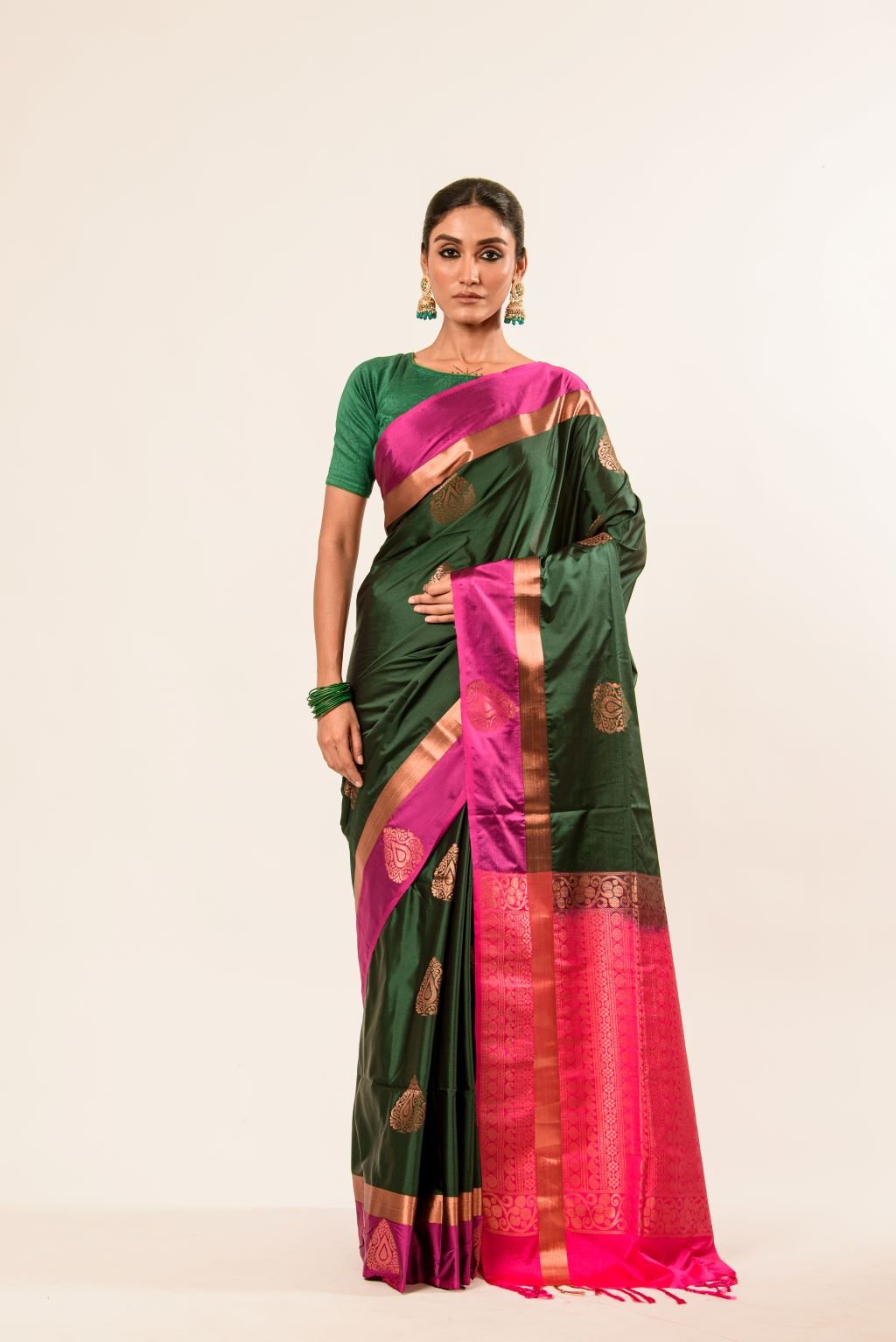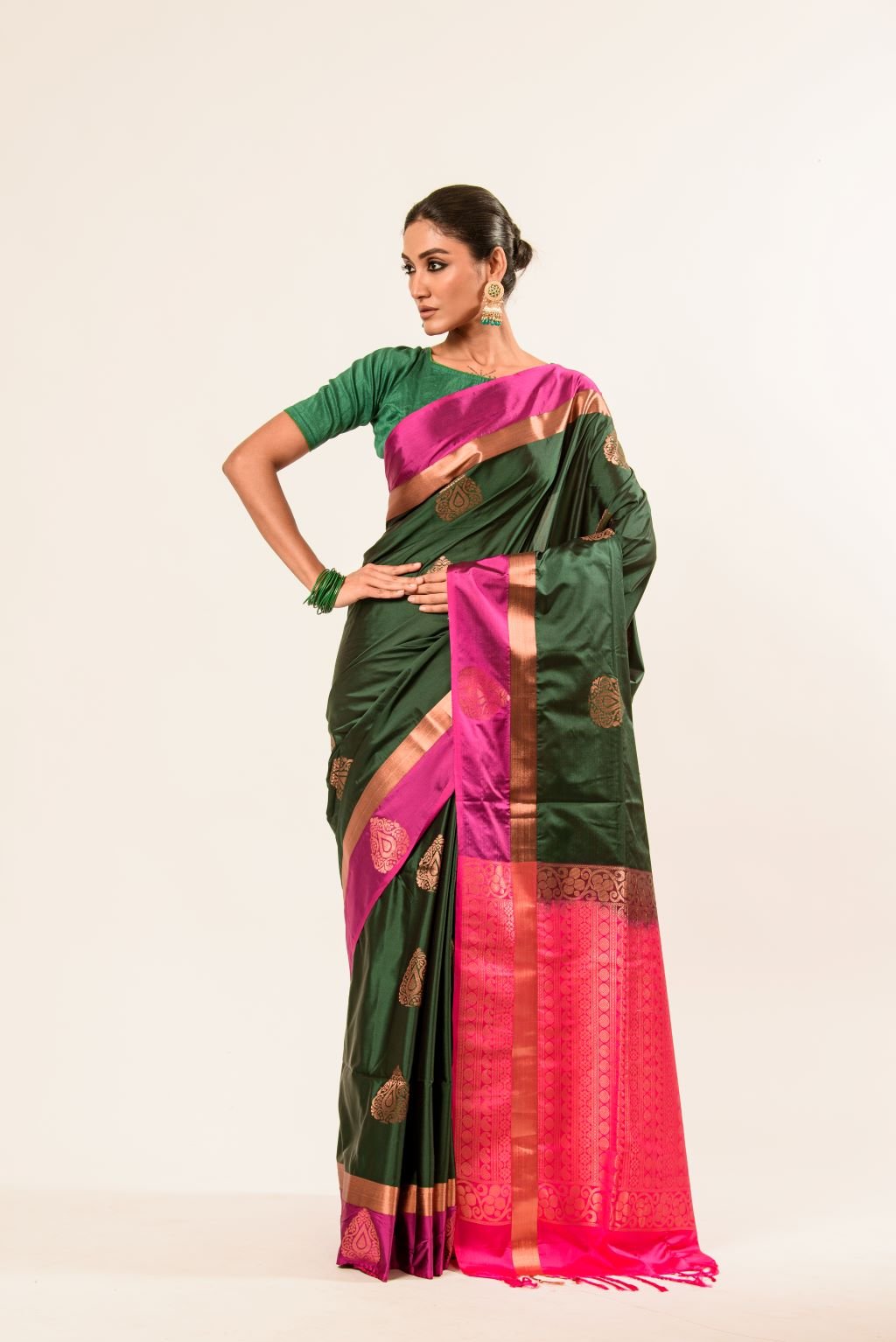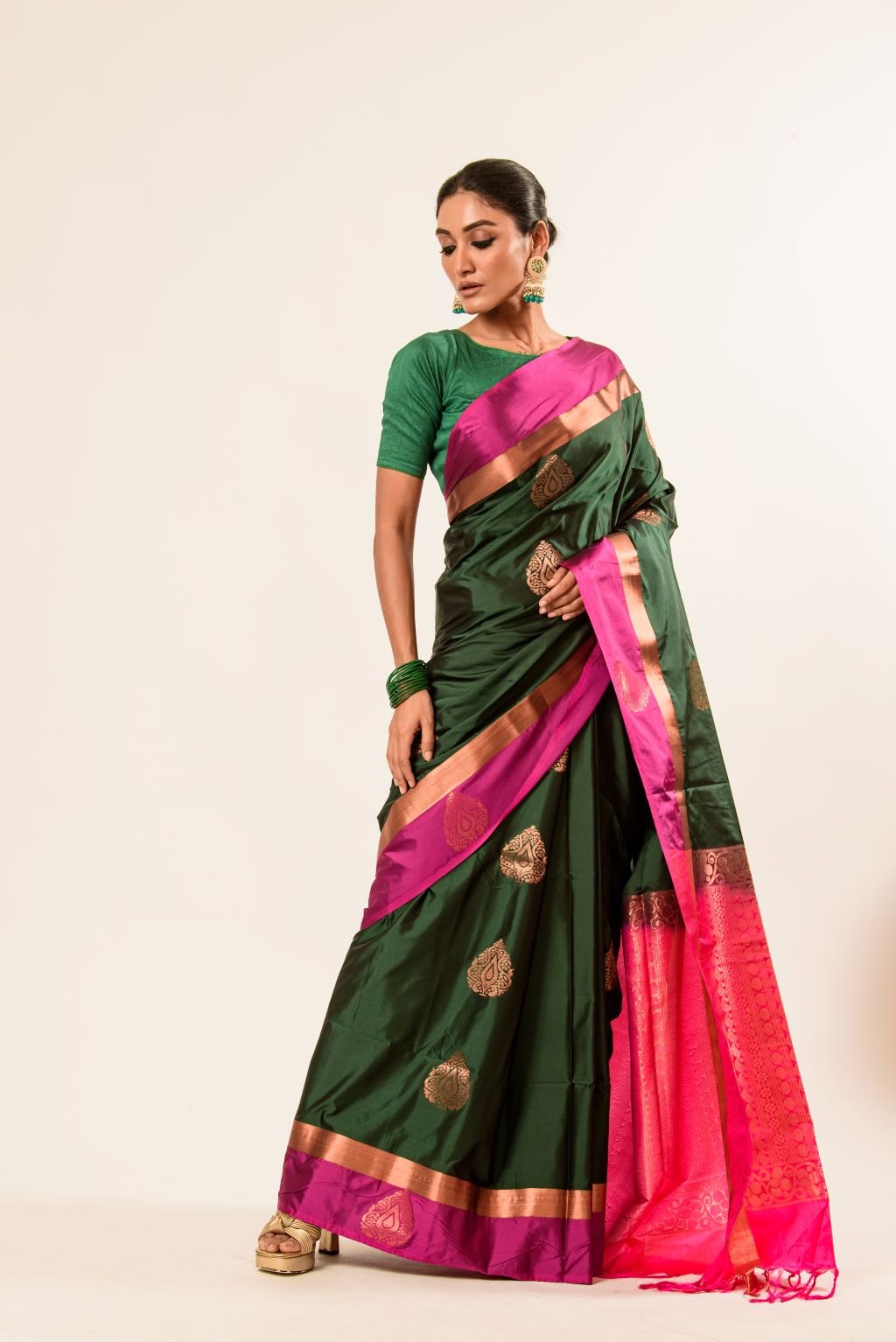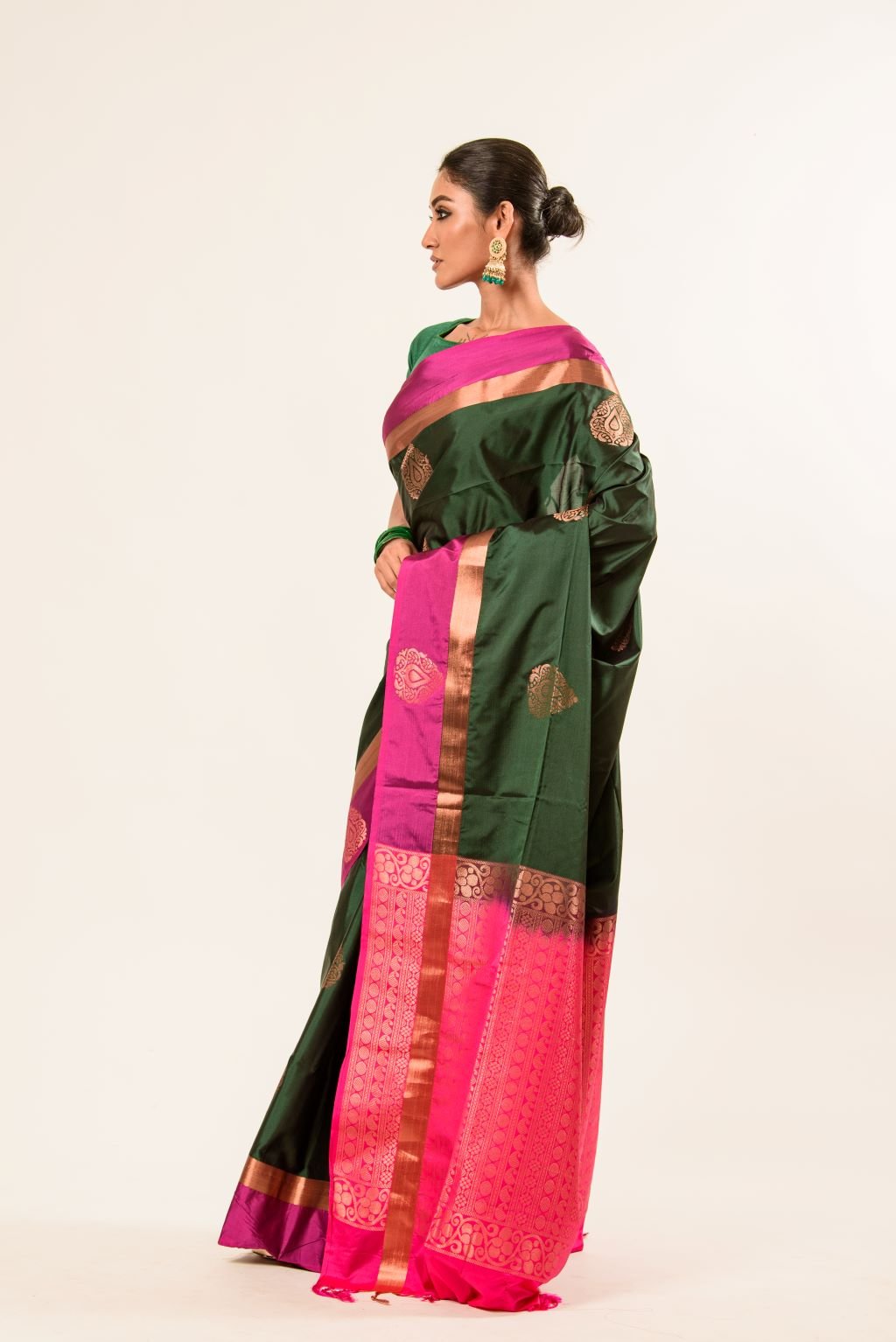When the topic of the beautiful elegance and ageless sophistication of the Jamdani saree is raised, West Bengal and Bangladesh are both crucial places. But in light of the history, craftsmanship, and evolution of this antique handloom saree, a fascinating debate arises on which place Jamdani sarees are most renowned.
The Jamdani saree is emblematic of the rich textile traditions of the Indian subcontinent. This saree is famous for its intricate weaving method, in which skilled weavers design intricate designs on the fabric using a handloom. Jamdani sarees are traditionally woven from cotton, which produces a light, airy fabric suitable for any occasion, ranging from daily wear to weddings and special occasions. Both West Bengal and Bangladesh possess areas that have been producing Jamdani handloom sarees for centuries, but both are distinct in their approach to this art.

Read to Know More About the Infamous Jamdani Saree Production in Bengal!
The Tradition of West Bengal's Jamdani Saree
West Bengal has been a place of handloom saree production for centuries, and it is especially renowned for its Jamdani sarees. The capital of the state, Kolkata, is the hub for the production and commerce of these exquisite handloom sarees. The area has a rich history of weaving and the craft goes back centuries. The West Bengal Jamdani saree is usually thought to be one of luxury and workmanship. The beautiful patterns and the exquisite workmanship of these sarees are the outcome of weavers working on them over generations.
West Bengal's Jamdani sarees are defined by their very subtle motifs and geometric patterns, generally inspired from nature like flowers, birds, and other daily life elements. The motifs get directly incorporated in the fabric form, and in this way, they impart the texture. They are typically woven handloom sarees and as such, taken as masterpieces of work in some way. The techniques required to prepare the same get traditionally handed over across generations to be kept safe till date.

Bangladesh's Jamdani Saree Heritage
Bangladesh also claims ownership of the Jamdani saree. To be precise, the Jamdani weaving tradition was born in Bangladesh some 2,000 years ago, and Dhaka was the historic hub of Jamdani making. The ancient art of weaving in the country is deeply related to its culture, and one of the dearest garments for Bangladesh is the Jamdani saree.
The Bangladeshi Jamdani sarees possess a slightly varied character compared to those of West Bengal. Patterns are more heterogeneous and less identical, with even more focus placed on fine detail and multiple color threads woven within the fabric. Historically, these sarees were made using silk, though they are currently also produced with handloom cotton, which keeps them lighter in weight and at a lower cost while maintaining their distinctive aesthetic quality.

The International Popularity of Jamdani Sarees
There has been a recent boom in the sale of handloom sarees online, with both Bangladesh and West Bengal presenting their heritage through e-commerce websites. Handloom sarees, such as Jamdani sarees, are being more and more requested for their eco-friendly nature and detailed craftsmanship. The increasing popularity of handloom cotton sarees has made it convenient for consumers across the globe to purchase these beautiful works of art without the need to visit the areas where they are originally produced.
Both Bangladesh and West Bengal are famous for the contribution they make to the Jamdani saree, and the handloom sarees produced in these areas are extremely valued by fashion followers across the globe. No matter whether you pick a Jamdani saree from West Bengal or Bangladesh, the secret lies in the knowledge of the very old tradition of handloom weaving that is still alive today.

Conclusion
Finally, although West Bengal and Bangladesh are both renowned for their Jamdani sarees, the genesis of this particular handloom technique is Bangladeshi. Yet the art has also flourished in West Bengal, ensuring that both areas are an intrinsic part of the heritage of this phenomenal saree. Either way, be it through handloom sarees online or from street markets, the Jamdani saree continues to be an authentic example of the allure of handwoven art.
Shop Sarees By Colour
| Saree Color | Ideal Occasion |
| Red Sarees | Weddings, Engagements, Karva Chauth, Festivals |
| Green Sarees | Mehndi Ceremonies, Traditional Puja, Eco-themed Events |
| Grey Sarees | Contemporary Gatherings, Office Parties, Subtle Elegance for Day or Night |
| Yellow Sarees | Haldi Ceremonies, Daytime Functions, Spring Events |
| Pink Sarees | Baby Showers, Birthday Parties, Romantic Dinners |
| Blue Sarees | Evening Parties, Corporate Events, Receptions |
| White Sarees | Temple Visits, Traditional Ceremonies, Peaceful Gatherings |
| Black Sarees | Cocktail Parties, Formal Events, New Year Celebrations |
| Orange Sarees | Navratri, Religious Events, Cultural Gatherings |
| Purple Sarees | Engagements, Festive Celebrations, Theme Parties |
| Peach Sarees | Summer Weddings, Brunches, Casual Daytime Gatherings |

